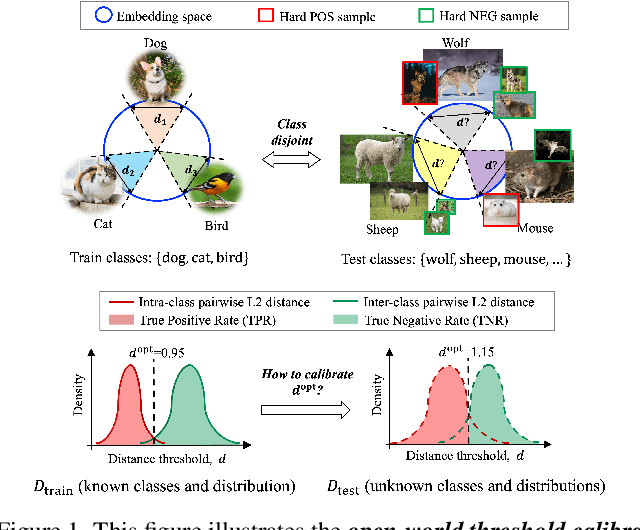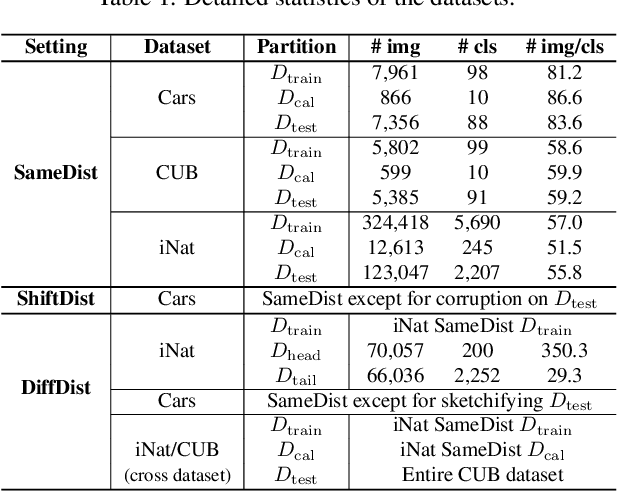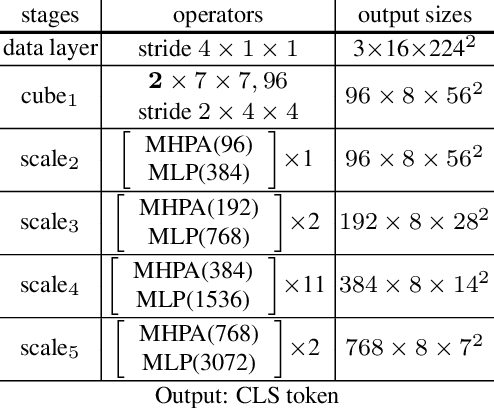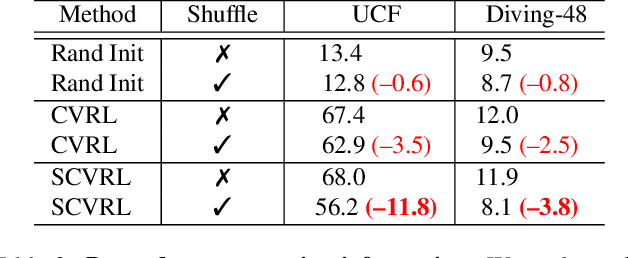Joseph Tighe
DigiData: Training and Evaluating General-Purpose Mobile Control Agents
Nov 11, 2025Abstract:AI agents capable of controlling user interfaces have the potential to transform human interaction with digital devices. To accelerate this transformation, two fundamental building blocks are essential: high-quality datasets that enable agents to achieve complex and human-relevant goals, and robust evaluation methods that allow researchers and practitioners to rapidly enhance agent performance. In this paper, we introduce DigiData, a large-scale, high-quality, diverse, multi-modal dataset designed for training mobile control agents. Unlike existing datasets, which derive goals from unstructured interactions, DigiData is meticulously constructed through comprehensive exploration of app features, resulting in greater diversity and higher goal complexity. Additionally, we present DigiData-Bench, a benchmark for evaluating mobile control agents on real-world complex tasks. We demonstrate that the commonly used step-accuracy metric falls short in reliably assessing mobile control agents and, to address this, we propose dynamic evaluation protocols and AI-powered evaluations as rigorous alternatives for agent assessment. Our contributions aim to significantly advance the development of mobile control agents, paving the way for more intuitive and effective human-device interactions.
Benchmarking Egocentric Multimodal Goal Inference for Assistive Wearable Agents
Oct 25, 2025Abstract:There has been a surge of interest in assistive wearable agents: agents embodied in wearable form factors (e.g., smart glasses) who take assistive actions toward a user's goal/query (e.g. "Where did I leave my keys?"). In this work, we consider the important complementary problem of inferring that goal from multi-modal contextual observations. Solving this "goal inference" problem holds the promise of eliminating the effort needed to interact with such an agent. This work focuses on creating WAGIBench, a strong benchmark to measure progress in solving this problem using vision-language models (VLMs). Given the limited prior work in this area, we collected a novel dataset comprising 29 hours of multimodal data from 348 participants across 3,477 recordings, featuring ground-truth goals alongside accompanying visual, audio, digital, and longitudinal contextual observations. We validate that human performance exceeds model performance, achieving 93% multiple-choice accuracy compared with 84% for the best-performing VLM. Generative benchmark results that evaluate several families of modern vision-language models show that larger models perform significantly better on the task, yet remain far from practical usefulness, as they produce relevant goals only 55% of the time. Through a modality ablation, we show that models benefit from extra information in relevant modalities with minimal performance degradation from irrelevant modalities.
Early Action Recognition with Action Prototypes
Dec 11, 2023



Abstract:Early action recognition is an important and challenging problem that enables the recognition of an action from a partially observed video stream where the activity is potentially unfinished or even not started. In this work, we propose a novel model that learns a prototypical representation of the full action for each class and uses it to regularize the architecture and the visual representations of the partial observations. Our model is very simple in design and also efficient. We decompose the video into short clips, where a visual encoder extracts features from each clip independently. Later, a decoder aggregates together in an online fashion features from all the clips for the final class prediction. During training, for each partial observation, the model is jointly trained to both predict the label as well as the action prototypical representation which acts as a regularizer. We evaluate our method on multiple challenging real-world datasets and outperform the current state-of-the-art by a significant margin. For example, on early recognition observing only the first 10% of each video, our method improves the SOTA by +2.23 Top-1 accuracy on Something-Something-v2, +3.55 on UCF-101, +3.68 on SSsub21, and +5.03 on EPIC-Kitchens-55, where prior work used either multi-modal inputs (e.g. optical-flow) or batched inference. Finally, we also present exhaustive ablation studies to motivate the design choices we made, as well as gather insights regarding what our model is learning semantically.
SkeleTR: Towrads Skeleton-based Action Recognition in the Wild
Sep 20, 2023



Abstract:We present SkeleTR, a new framework for skeleton-based action recognition. In contrast to prior work, which focuses mainly on controlled environments, we target more general scenarios that typically involve a variable number of people and various forms of interaction between people. SkeleTR works with a two-stage paradigm. It first models the intra-person skeleton dynamics for each skeleton sequence with graph convolutions, and then uses stacked Transformer encoders to capture person interactions that are important for action recognition in general scenarios. To mitigate the negative impact of inaccurate skeleton associations, SkeleTR takes relative short skeleton sequences as input and increases the number of sequences. As a unified solution, SkeleTR can be directly applied to multiple skeleton-based action tasks, including video-level action classification, instance-level action detection, and group-level activity recognition. It also enables transfer learning and joint training across different action tasks and datasets, which result in performance improvement. When evaluated on various skeleton-based action recognition benchmarks, SkeleTR achieves the state-of-the-art performance.
Challenges of Zero-Shot Recognition with Vision-Language Models: Granularity and Correctness
Jun 28, 2023



Abstract:This paper investigates the challenges of applying vision-language models (VLMs) to zero-shot visual recognition tasks in an open-world setting, with a focus on contrastive vision-language models such as CLIP. We first examine the performance of VLMs on concepts of different granularity levels. We propose a way to fairly evaluate the performance discrepancy under two experimental setups and find that VLMs are better at recognizing fine-grained concepts. Furthermore, we find that the similarity scores from VLMs do not strictly reflect the correctness of the textual inputs given visual input. We propose an evaluation protocol to test our hypothesis that the scores can be biased towards more informative descriptions, and the nature of the similarity score between embedding makes it challenging for VLMs to recognize the correctness between similar but wrong descriptions. Our study highlights the challenges of using VLMs in open-world settings and suggests directions for future research to improve their zero-shot capabilities.
ScaleDet: A Scalable Multi-Dataset Object Detector
Jun 08, 2023



Abstract:Multi-dataset training provides a viable solution for exploiting heterogeneous large-scale datasets without extra annotation cost. In this work, we propose a scalable multi-dataset detector (ScaleDet) that can scale up its generalization across datasets when increasing the number of training datasets. Unlike existing multi-dataset learners that mostly rely on manual relabelling efforts or sophisticated optimizations to unify labels across datasets, we introduce a simple yet scalable formulation to derive a unified semantic label space for multi-dataset training. ScaleDet is trained by visual-textual alignment to learn the label assignment with label semantic similarities across datasets. Once trained, ScaleDet can generalize well on any given upstream and downstream datasets with seen and unseen classes. We conduct extensive experiments using LVIS, COCO, Objects365, OpenImages as upstream datasets, and 13 datasets from Object Detection in the Wild (ODinW) as downstream datasets. Our results show that ScaleDet achieves compelling strong model performance with an mAP of 50.7 on LVIS, 58.8 on COCO, 46.8 on Objects365, 76.2 on OpenImages, and 71.8 on ODinW, surpassing state-of-the-art detectors with the same backbone.
Learning for Open-World Calibration with Graph Neural Networks
May 19, 2023



Abstract:We tackle the problem of threshold calibration for open-world recognition by incorporating representation compactness measures into clustering. Unlike the open-set recognition which focuses on discovering and rejecting the unknown, open-world recognition learns robust representations that are generalizable to disjoint unknown classes at test time. Our proposed method is based on two key observations: (i) representation structures among neighbouring images in high dimensional visual embedding spaces have strong self-similarity which can be leveraged to encourage transferability to the open world, (ii) intra-class embedding structures can be modeled with the marginalized von Mises-Fisher (vMF) probability, whose correlation with the true positive rate is dataset-invariant. Motivated by these, we design a unified framework centered around a graph neural network (GNN) to jointly predict the pseudo-labels and the vMF concentrations which indicate the representation compactness. These predictions can be converted into statistical estimations for recognition accuracy, allowing more robust calibration of the distance threshold to achieve target utility for the open-world classes. Results on a variety of visual recognition benchmarks demonstrate the superiority of our method over traditional posthoc calibration methods for the open world, especially under distribution shift.
Large Scale Real-World Multi-Person Tracking
Nov 03, 2022Abstract:This paper presents a new large scale multi-person tracking dataset -- \texttt{PersonPath22}, which is over an order of magnitude larger than currently available high quality multi-object tracking datasets such as MOT17, HiEve, and MOT20 datasets. The lack of large scale training and test data for this task has limited the community's ability to understand the performance of their tracking systems on a wide range of scenarios and conditions such as variations in person density, actions being performed, weather, and time of day. \texttt{PersonPath22} dataset was specifically sourced to provide a wide variety of these conditions and our annotations include rich meta-data such that the performance of a tracker can be evaluated along these different dimensions. The lack of training data has also limited the ability to perform end-to-end training of tracking systems. As such, the highest performing tracking systems all rely on strong detectors trained on external image datasets. We hope that the release of this dataset will enable new lines of research that take advantage of large scale video based training data.
An In-depth Study of Stochastic Backpropagation
Sep 30, 2022



Abstract:In this paper, we provide an in-depth study of Stochastic Backpropagation (SBP) when training deep neural networks for standard image classification and object detection tasks. During backward propagation, SBP calculates the gradients by only using a subset of feature maps to save the GPU memory and computational cost. We interpret SBP as an efficient way to implement stochastic gradient decent by performing backpropagation dropout, which leads to considerable memory saving and training process speedup, with a minimal impact on the overall model accuracy. We offer some good practices to apply SBP in training image recognition models, which can be adopted in learning a wide range of deep neural networks. Experiments on image classification and object detection show that SBP can save up to 40% of GPU memory with less than 1% accuracy degradation.
SCVRL: Shuffled Contrastive Video Representation Learning
May 24, 2022



Abstract:We propose SCVRL, a novel contrastive-based framework for self-supervised learning for videos. Differently from previous contrast learning based methods that mostly focus on learning visual semantics (e.g., CVRL), SCVRL is capable of learning both semantic and motion patterns. For that, we reformulate the popular shuffling pretext task within a modern contrastive learning paradigm. We show that our transformer-based network has a natural capacity to learn motion in self-supervised settings and achieves strong performance, outperforming CVRL on four benchmarks.
 Add to Chrome
Add to Chrome Add to Firefox
Add to Firefox Add to Edge
Add to Edge